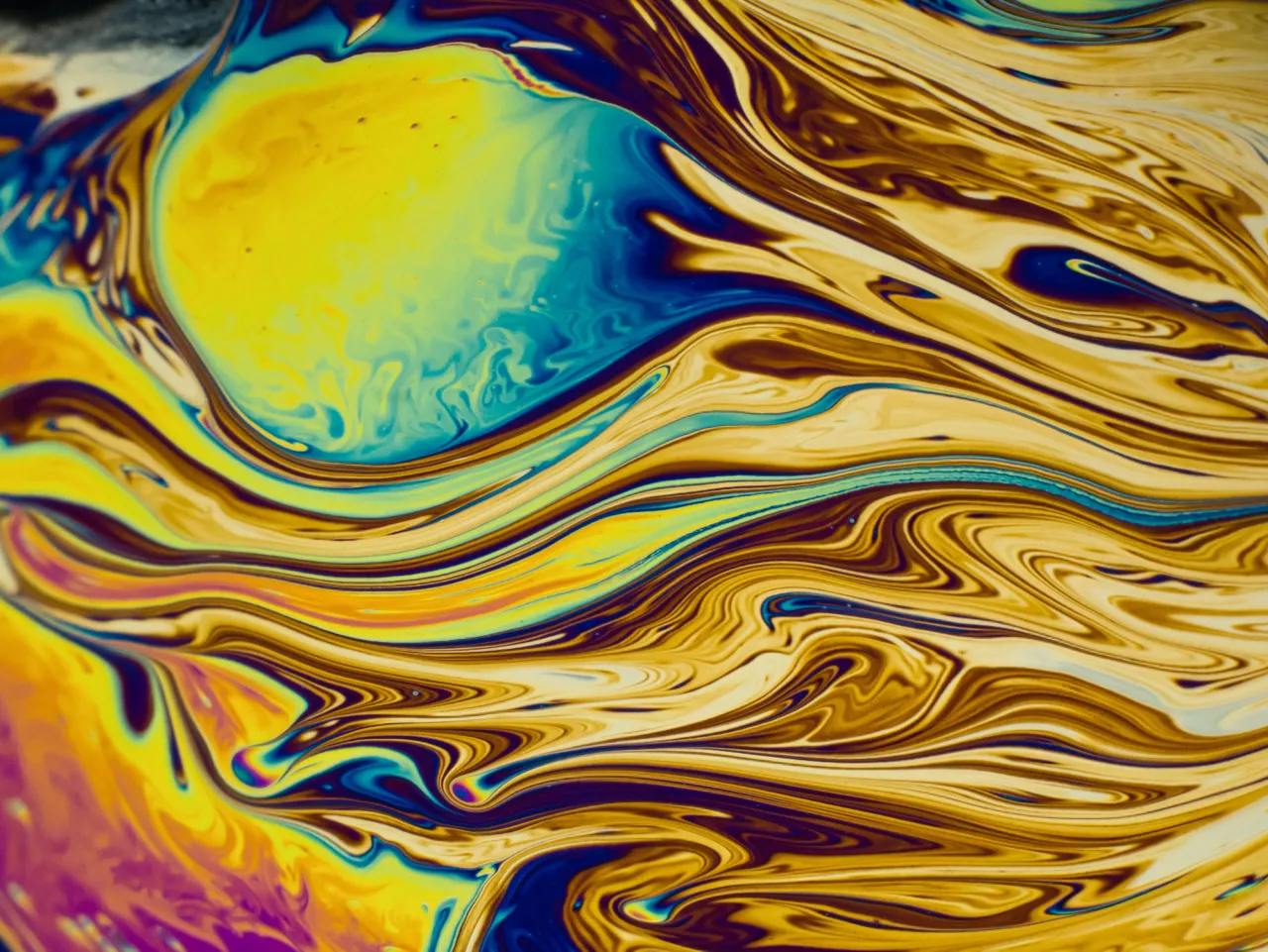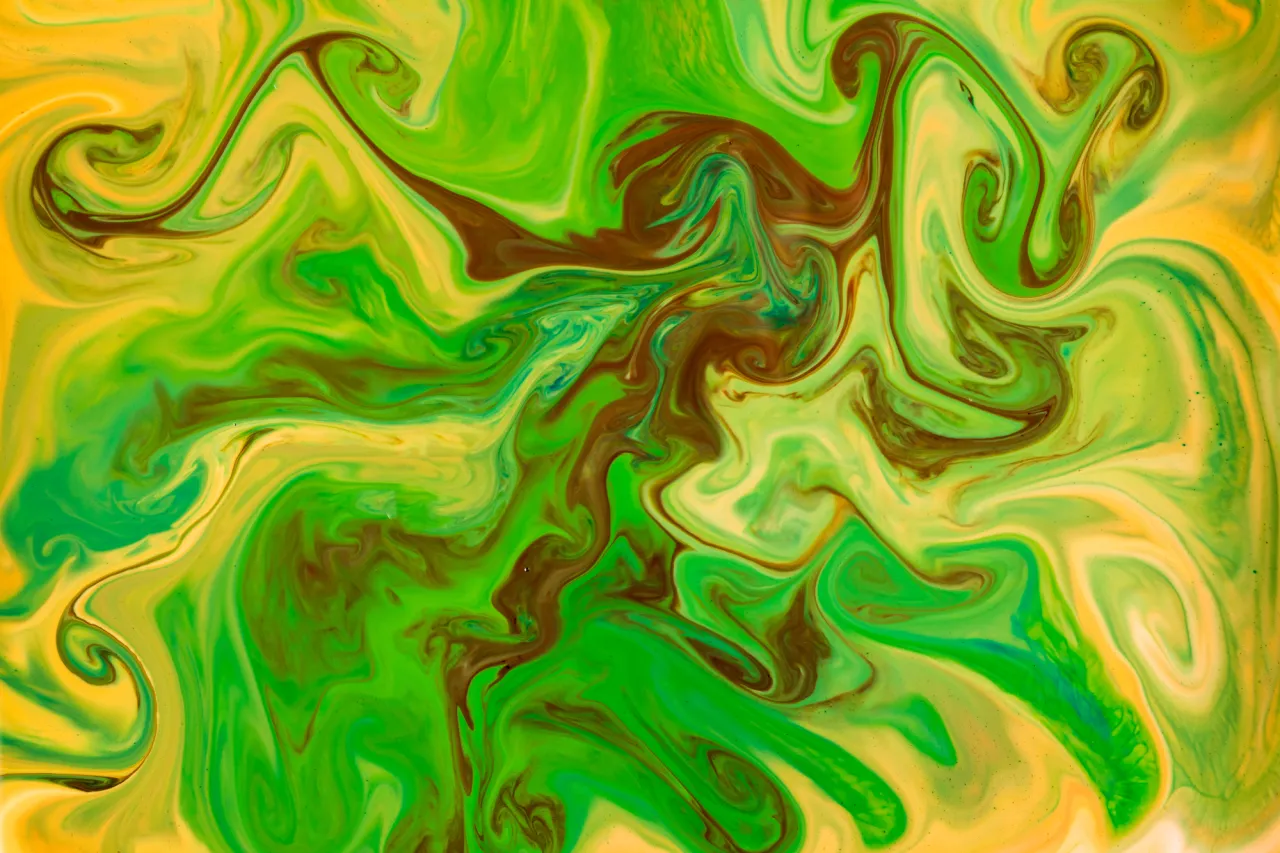What Is Retro Futurism? Explore the Retro-Futuristic Art & Design Trend
Retrofuturism is almost as old as science fiction itself. Clumsy robots, shiny flying cars, time and space travels via vehicles that may remind us steam trains, and analogue devices to dive into virtual reality—retro futurism resembles nostalgic ideas of the future. Specifically, how we pictured them in the past.
Ideas behind novels, movies, graphic designs, and retro futurism decor can be optimistic or pessimistic. In the first case, technologies of the future help humanity build utopia. In the second case, they cause future generations to morally decay or feel less happy.
In this article, we dive into retro futurism art history, learn the genre’s distinctive features, and share dozens of tips on how to create retro futurism design.
See Retrofuturism CollectionWhat is retro-futurism? When did retro futurism begin?
Retrofuturism encompasses works of art and design of the following theme: the world of the future as it was imagined decades or even centuries ago.
The term was coined by journalists in the 1980s to describe custom design jewelry, and later—one of the first retro futuristic films, “Brazil” by Terry Gilliam. However, the retro-futurism art phenomenon is over 40 years old. In particular, some graphic novels published from the 1930s to the 1960s (including iconic “Captain Future” and “Space Man”) were partially based on the aesthetics of Jules Verne’s books —“retro” and “futuristic” at the same time.
To get free downloads, click the banner above, switch to «Annual Upfront» subscriptions, and press the «Free 7 Day Trial» button.
Retro futuristic aesthetic rules are not something you can describe in a few words—As they heavily depend on which historical era or a particular sci-fi novel an artist or designer refers to. For example, retro futurism design with a steampunk aesthetic is significantly different from one with a cyberpunk aesthetic. Steampunk uses the aesthetics of the XIX century’s sci-fi (like “The Time Machine” by Herbert Wells or “Frankenstein” by Mary Shelley); cyberpunk refers to the aesthetics of sci-fi artworks created at the end of the 20th century (classic examples: “Do Androids Dream of Electric Sheep?” by Philip K. Dick and the “Blade Runner” movie based on this novel).
And what about the general mood of vintage futurism works? From a conceptual point of view, retro sci-fi concepts differ depending on what moods dominated in sci-fi art that became the basis of retro futurism graphic design or art.
The steam engine, human travel into space, the introduction of the PC , and cloning—all of these provoke artists to create sci-fi works. At first, artworks inspired by a certain scientific achievement are full of optimism. Illustrators, film directors, and writers believe that the new technology is capable of solving global problems and making people happier. The more time passes, the more pessimistic they get. This results in them blaming technology for humanity’s decline.
Let’s take Isaac Asimov’s legendary series “The Foundation”, as well as “The Martian Chronicles” by Ray Bradbury as examples. Both masterpieces are dedicated to space colonization, but while Asimov is optimistic, Bradbury is not.
Steampunk, atompunk, dieselpunk, biopunk, cyberpunk, and Raygun Gothic are the most popular retrofuturistic subgenres. Explore more on past decade styles: Retro Rewind: Design Trends of the 60s, 70s, and 80s Explained.
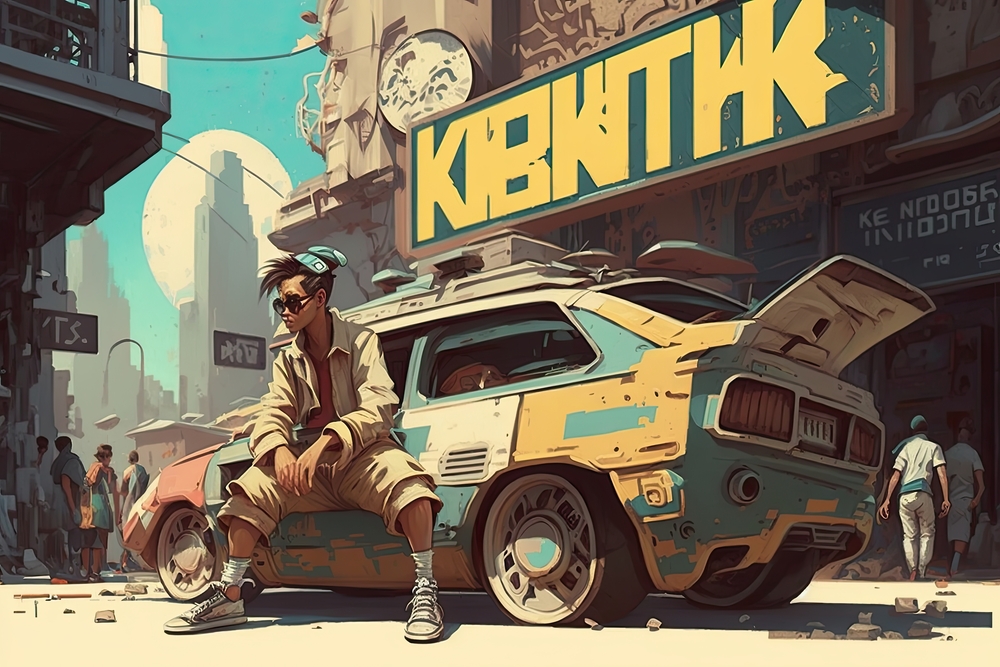
6 key retrofuturistic designs features
The visual aesthetics of retro-futurism are extremely diverse, because works in this genre may refer to a wide range of historical periods, from the Industrial Revolution to the early Internet age.
Retrofuturistic illustrations, designs, books, or movies show the world of the future as seen by people from the past. Thus, dieselpunk shows us a gloomy future of WWII-technology war machines and endless military confrontations, referring to the period from the 1930s to the 1960s. Along with ideas about the senselessness of war, dieselpunk tells stories about people who are afraid of nuclear war, suspect others in espionage, and enthusiastically discuss new weapons.
However, the following retro futurism aesthetic features are common for most artworks and designs of the genre:
- Recognizable aesthetics of the past (from the Victorian era to the beginning of the digital age);
- Nostalgic vibe;
- Emphasis on engineering, science, and technology;
- A radical (either optimistic or pessimistic) view of the future;
- Retro futurism fonts, geometric and rounded;
- Faded backgrounds and vibrant colors.
To get free downloads, click the banner above, switch to «Annual Upfront» subscriptions, and press the «Free 7 Day Trial» button.
Each sub-style of retrofuturism has its own characteristics, too. 60s retro futurism is often dedicated to space travels and “peaceful” technologies like flying cars or smart homes. The color palette for retro-futuristic designs of this kind is warm and bright. They feature sun-drenched interiors with large rounded windows that offer a wonderful view.
On the other hand, 90s futurism, in particular cyberpunk, can be recognized by neon, dark backgrounds, small apartments, and a complete absence of nature (a consequence of climate change). The loneliness of a person in an overpopulated metropolis and the moral decline of humanity are the main themes of such images and videos.
Why is retro futurism popular?
Retrofuturism art performs several important cultural functions.
First, the genre allows artists and their audience to reflect on the topic of whether modern science and technology have given us what was promised. That is, a happier and more comfortable life.
Secondly, retrofuturism immerses us in dreamy nostalgia by showing things that we associate with our childhood, adolescence, or even our parents. This applies the most to retro futuristic graphic design. Why does this nostalgic approach work in marketing? Find out here: What Is Nostalgia Marketing And How You Can Use It To Engage Your Audience.
Retro futuristic art and design are also of interest to creators because they open up endless possibilities for fantasies about possible or impossible futures, but allow them to build their creative ideas around already existing aesthetics that the creator loves and knows well (for example, 1960s retro futurism is about noir). Thus, the retro futurism style mixes aesthetics of the past, problems of the present, and an imaginary vision of the future.
Retro-futuristic creative campaigns are a good idea for brands that want to try nostalgic marketing and promote products or services as a “thing of the future”. The choice of a historical period must be determined by the brand’s target audience. For example, 90s retro futurism will appeal to Millennials who witnessed the spread of digital technologies and the Internet. Another category of buyers who can be targeted by such campaigns are Zoomers, who were born with a smartphone in their hands.
Discover how your clients consume information and make purchase decisions to sell more: Generations Explained: Baby Boomers, Generations X, Y, Z, and Alpha.
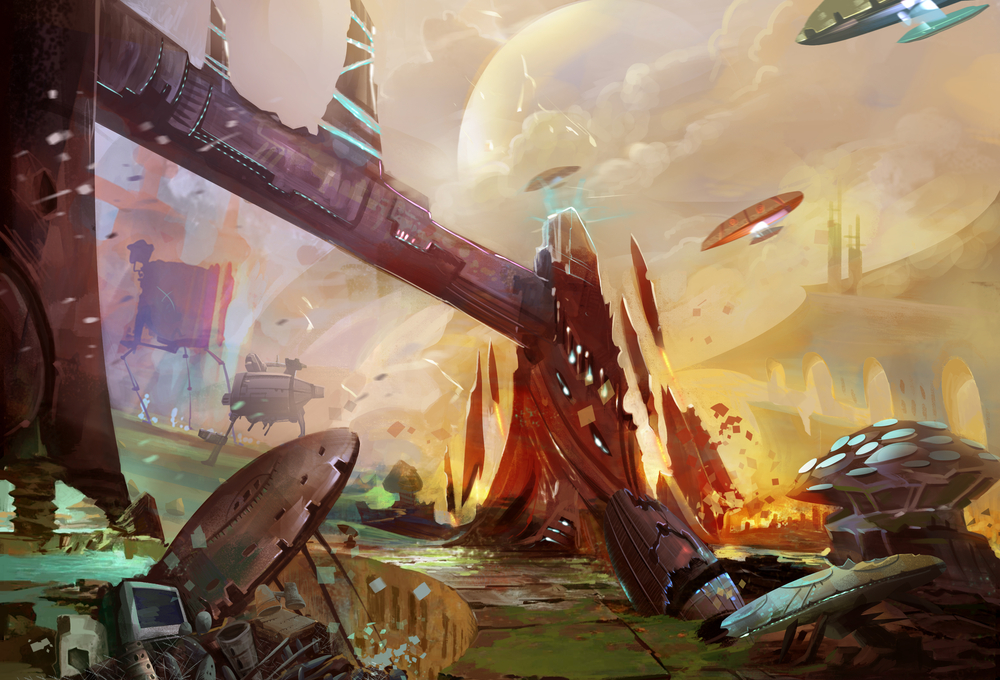
How to make retro futurism designs
Retro futurism aesthetic principles are flexible and allow creators to reflect on problems of today and think about future that we (fortunately or not) avoided.
The key to any successful creative project is a powerful idea that you want to share. If you already have one in mind and are new to the retrofuturism genre start by looking for inspiration and references:
Step 1. Look for retro futurism examples.
Retro futurism posters, movies, books, graphic novels and futurology magazines can be a good place to start. If you like to dig deep, explore retro futurism artists, but also the aesthetics of the historical periods they are based on.
To get free downloads, click the banner above, switch to «Annual Upfront» subscriptions, and press the «Free 7 Day Trial» button.
Step 2. Define what you mean by “retro.”
Choose a historical era from the end of the XIX century to the first decade of the XIX century that appeals to you. 80s retro futurism is about space and a happy life in which smart machines make our lives easier; 1950s retro futurism is almost always atomic and dystopian. Retro futurism artists that work with how the future was seen in the 2000s usually delve into the topics of cyberspace and the harmful human impact on the ecosystem.
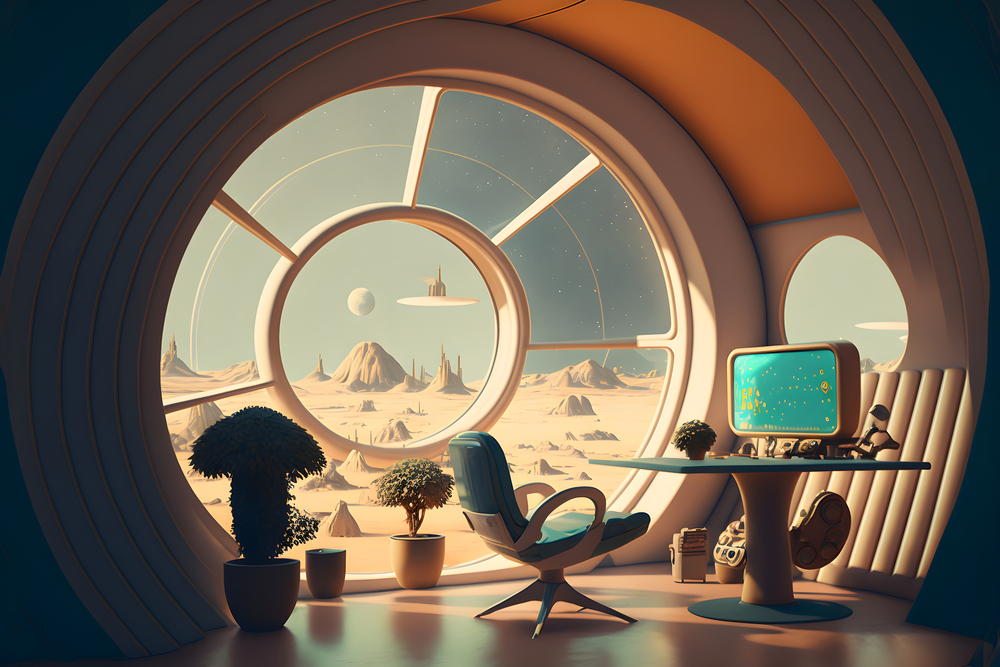
Step 3. Retro futurism color palette and mood board.
Create a retro techno futurism mood board that immerses viewers in the world you intend to show. Use our retro futuristic collection, as well as “Favorites” to create a mood board and save interesting visual concepts for later.
If you’re working on a static design or futuristic illustration, after this step, you’re good to go with your own design. And if you plan to produce a complex product, such as a brand identity, mobile app design, or standalone animation series, it’s time to come up with some conceptual drafts.
Step 4. Idea and storytelling.
Regardless of whether you are working with 50s retro futurism or the style of 90s, your story is subject to the general rules of storytelling. You need a hero and a conflict for a cohesive product that will engage your audience. Learn more here: A Brief Guide on Sequential Storytelling.
Some good examples of retro futurism in marketing include: Toyota “Back to the Future” commercial featuring Michael J. Fox and Christopher Lloyd (2015) and Adidas Originals “Your Future Is Not Mine.”
We also recommend watching iconic retro futuristic movies like “Beyond the Black Rainbow” by Panos Cosmatos, “Casshern” by Kazuaki Kiriya, and “Sleeper” by Woody Allen. And if you need more practical examples of how to apply retro futurism, check out architecture and product design featuring this style. For example, “Walden 7” by Ricardo Bofill (Barcelona, Spain) or “Habitat 67” by Moshe Safdie (the Canadian Pavilion for the World Exposition of 1967) belong to 70s retro futurism.
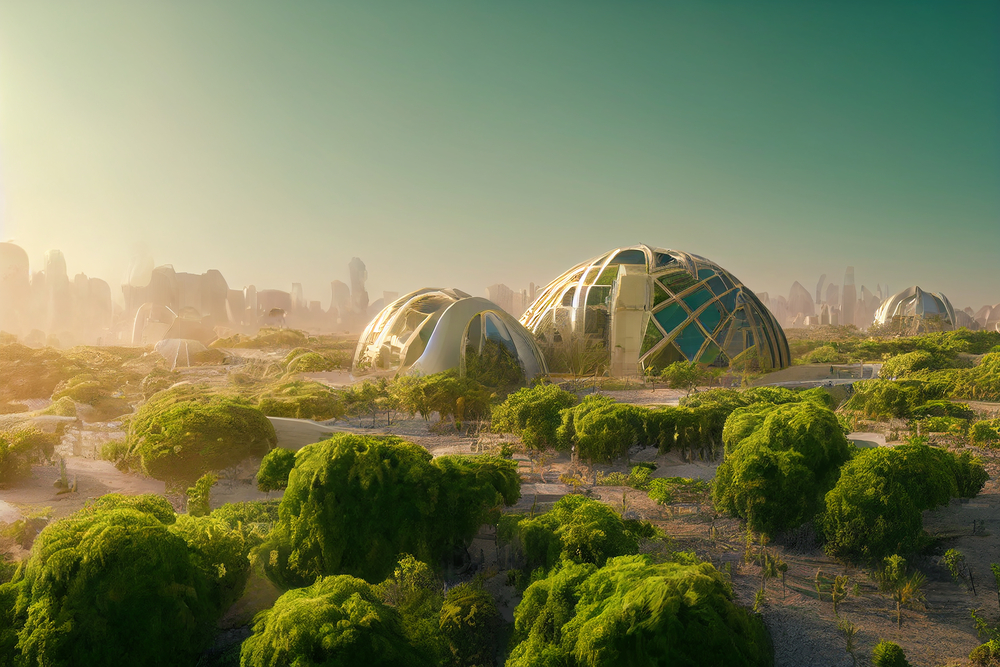
Wrapping up
Retro futurism seems to be the easiest way for designers, screenwriters, artists, and other creatives to develop their imaginations and answer the question of how they see the future—optimistically or pessimistically.
The genre started with retro futurism books, posters, and films, and can now be spotted in fashion, architecture, and marketing design. Want to try your hand at it too? Then start today and create your first vintage futuristic collage using images by Depositphotos authors.
Other articles you might find interesting
Retro Rewind: Design Trends of the 60s, 70s, and 80s Explained
A Visual Symphony of the 70s: Thematic Image Collection
The Power of Neon: Definition, Design Tips, and Color Codes







